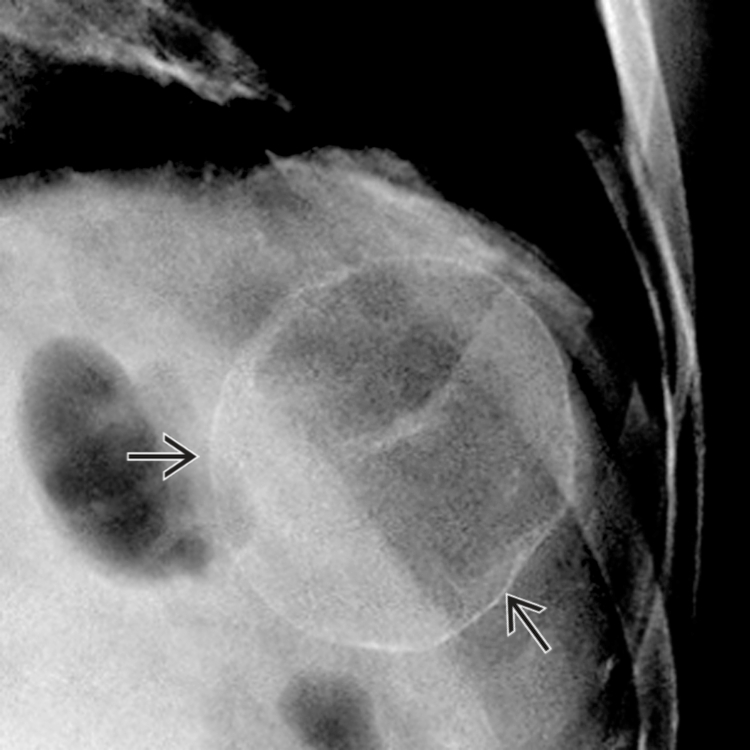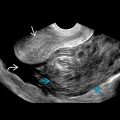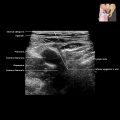KEY FACTS
Imaging
- •
Can be classified as primary (congenital) vs. secondary (acquired) or true (epithelial lined) vs. false (no epithelial lining)
- ○
Secondary more common than primary (80% vs. 20%)
- ○
Hydatid cyst is example of acquired true cyst
- ○
- •
Classically, anechoic to hypoechoic, avascular, sharply defined, spherical lesion with posterior acoustic enhancement
- ○
Variable presence of internal debris/septation, wall calcification depending on type and etiology
- ○
Top Differential Diagnoses
- •
Inflammatory or infection
- ○
Pyogenic, fungal, or granulomatous abscess
- ○
- •
Neoplastic
- ○
Benign (hemangioma, lymphangioma) or malignant (cystic metastasis, lymphoma)
- ○
- •
Vascular
- ○
Hematoma, infarction, peliosis, intrasplenic pseudoaneurysm
- ○
- •
Intrasplenic pancreatic pseudocyst
Diagnostic Checklist
- •
Rule out infectious, vascular, and neoplastic cystic lesions
- •
Consider if congenital or acquired cyst
- ○
Congenital (epidermoid): Typically larger, anechoic, with thin wall; ± calcification or debris (less common)
- ○
Acquired: Most commonly posttraumatic; usually smaller, often anechoic, but may have debris; thicker wall ± calcification
- ○
- •
Often impossible to distinguish primary vs. secondary (or true vs. false) cysts by imaging
Scanning Tips
- •
Patient is best scanned in supine or right lateral decubitus position following deep inspiration with US transducer angling between ribs
 .
.
 .
.










